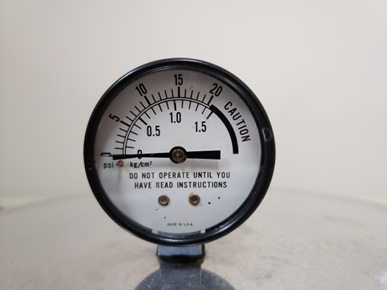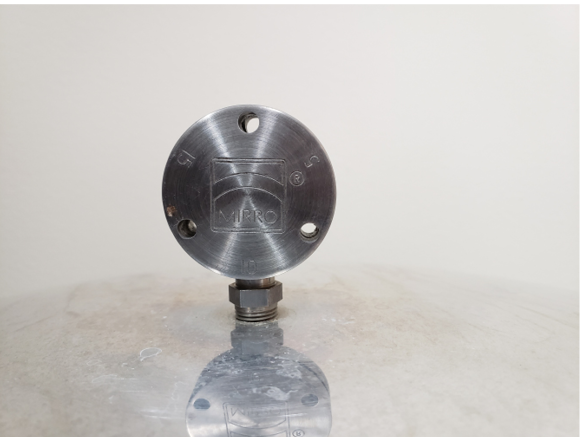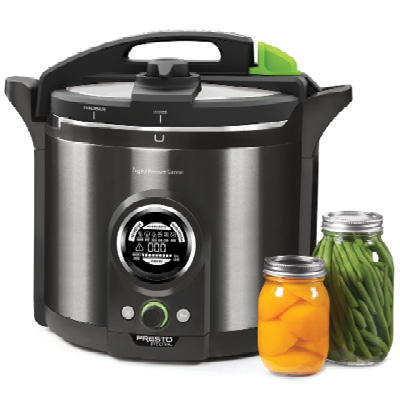Temperature and Pressure
Temperature and pressure go hand-in-hand when pressure canning. In a sealed canner, as steam builds pressure, the water temperature in the canner rises. At sea level, water boils at 212 F. Water in a pressurized canner will boil at 227 F under 5 pounds of pressure (psi), at 239 F under 10 psi, and at 250 F under 15 psi.
The higher temperatures achieved in a pressure canner are necessary to destroy harmful bacterial spores. Most importantly, it destroys spores of Clostridium botulinum, while still preserving quality and nutrition.
Venting is an important step in pressure canning. Venting removes air from the canner. Air acts as an insulator, interfering with the temperature increase inside the canner. When pressure canning, it is important to have an environment of pure steam surrounding the jars.
Elevation is an important factor for safe canned foods. As elevation increases, the temperature at which water boils to steam decreases, and the temperature in a sealed canner also decreases. Home canners who live at elevations above 1,000 feet make adjustments by processing foods at higher pressure. A research-tested recipe will guide you in making the proper adjustments. Check elevation at https://www.advancedconverter.com/map-tools/find-elevation-of-address.
Dial Gauge and Weighted Pressure Canners
A traditional pressure canner monitors pressure inside the canner using a dial gauge or a weight. The needle on a dial gauge canner responds to pressure, registering the pressure in the canner; a canner weight jiggles or rocks when the canner is at pressure (5, 10 or 15 psi).
The needle on a dial gauge canner registers the pressure inside the canner. Once venting is complete, the needle will rise as pressure (and temperature) increases in the canner. A dial gauge should be checked every year against a calibrated gauge to ensure the dial is registering accurately. Contact your state Extension program or Presto Industries (800-877-0441) for information on dial gauge testing.
Dial Pressure Guage
The weight or weight regulator on a weighted canner will rock gently or jiggle when the canner is at pressure, keeping pressure inside the canner at a constant level. Weights come in different styles. Pictured is a weight that regulates 5 psi,
10 psi, or 15 psi, depending on the orientation of the weight on the vent port. Regardless of the style of weight, a canner must
be able to regulate pressure at 5 psi, 10 psi, or 15 psi. Read your manufacturer’s directions, or contact the manufacturer directly, to know how a particular weight should register pressure.
Weighted Canner
One type of canner, the All-American Pressure Canner, has a unique lid-locking system and has both a weight regulator and a dial gauge. All-American canners are weighted canners with a dial gauge as a reference. This brand of canner relies on the weight regulator for processing food safely; these canners are not used as dial gauge canners. All-American canner dial gauges are not calibrated annually. Contact All-American (Wisconsin Aluminum Foundry, Consumer Products
Division) for more information on their brand of canners
(920-682-8286).
Modern pressure canners come equipped with removable racks, a vent pipe, cover lock, and a safety fuse. Pressure canners must be large enough hold at least 4 quart jars and be able to regulate pressure at 5, 10, and 15 psi (weighted gauge) or up to 20 psi (dial gauge). For more information see Preserving Food: Using Pressure Canners from the National Center for Home Food Preservation. Regardless of the type of pressure canner that you use, be sure to adjust for elevation.
Electric Pressure Canners
Presto has developed an electric canner – the Presto Precise® Digital Pressure Canner. While traditional pressure canners sense and respond to pressure, the Presto Digital canner senses and responds to temperature.
Food manufacturers who can tomatoes, green beans, corn, and meats found in grocery stores are required to use equipment that monitors and records temperature during the canning process. The same technology is used in the Presto Precise® appliance.
When used at higher elevations, the Presto Precise® Digital Pressure Canner will automatically adjust to maintain process temperature.
Always follow canner instructions if using the Presto Precise® Digital Pressure Canner. As with traditional dial gauge and weighted canners, the Presto electric pressure canner should be used with tested recipes available from sources such as the National Center for Home Food Preservation or your state Extension program.
Multicookers and other types of pressure cookers are not recommended for home canning. See Burning Issue: Canning in Electric Multi-Cookers from the National Center for Home Preservation.
Resources
How Do I Can Foods? National Center for Home Food Preservation. https://nchfp.uga.edu/how/can_home.html#gsc.tab=0
Presto Precise Digital Pressure Canner. Fact sheet. 2021. National Presto Industries, Inc. http://www.gopresto.com/downloads/canning/Digital_Canner_Facts_and_FAQs_v22d.pdf
Using Pressure Canners. National Center for Home Food Preservation. https://nchfp.uga.edu/publications/uga/using_press_canners.html#gsc.tab=0
USDA Complete Guide to Home Canning, 2015. https://nchfp.uga.edu/publications/publications_usda.html#gsc.tab=0
See www.ag.ndsu.edu/food for more information.
By Barbara Ingham, Professor, University of Wisconsin-Madison; Julie Garden-Robinson, Food and Nutrition Specialist/Professor – NDSU Extension; Rebecca West, Program Assistant, NDSU Extension; and Carol Larvick, Extension Educator, University of Nebraska.
Funding for this publication was made possible by the U.S. Department of Agriculture’s Agricultural Marketing Service through grant 21SCBPND1069. Its contents are solely the responsibility of the authors and do not necessarily represent the official views of the USDA.
Information in this publication is provided purely for educational purposes. No responsibility is assumed for any problems associated with the use of products or services mentioned. No endorsement of products or companies is intended, nor is criticism of unnamed products or companies implied.
Barbara Ingham, University of Wisconsin-Madison
NDSU encourages you to use and share this content, but please do so under the conditions of our Creative Commons license. You may copy, distribute, transmit and adapt this work as long as you give full attribution, don’t use the work for commercial purposes and share your resulting work similarly. For more information, visit www.ag.ndsu.edu/agcomm/creative-commons.
County commissions, North Dakota State University and U.S. Department of Agriculture cooperating. NDSU does not discriminate in its programs and activities on the basis of age, color, gender expression/identity, genetic information, marital status, national origin, participation in lawful off-campus activity, physical or mental disability, pregnancy, public assistance status, race, religion, sex, sexual orientation, spousal relationship to current employee, or veteran status, as applicable. Direct inquiries to Vice Provost for Title IX/ADA Coordinator, Old Main 201, NDSU Main Campus, 701-231-7708, ndsu.eoaa@ndsu.edu. This publication will be made available in alternative formats for people with disabilities upon request, 701-231-7881. web-10-22




